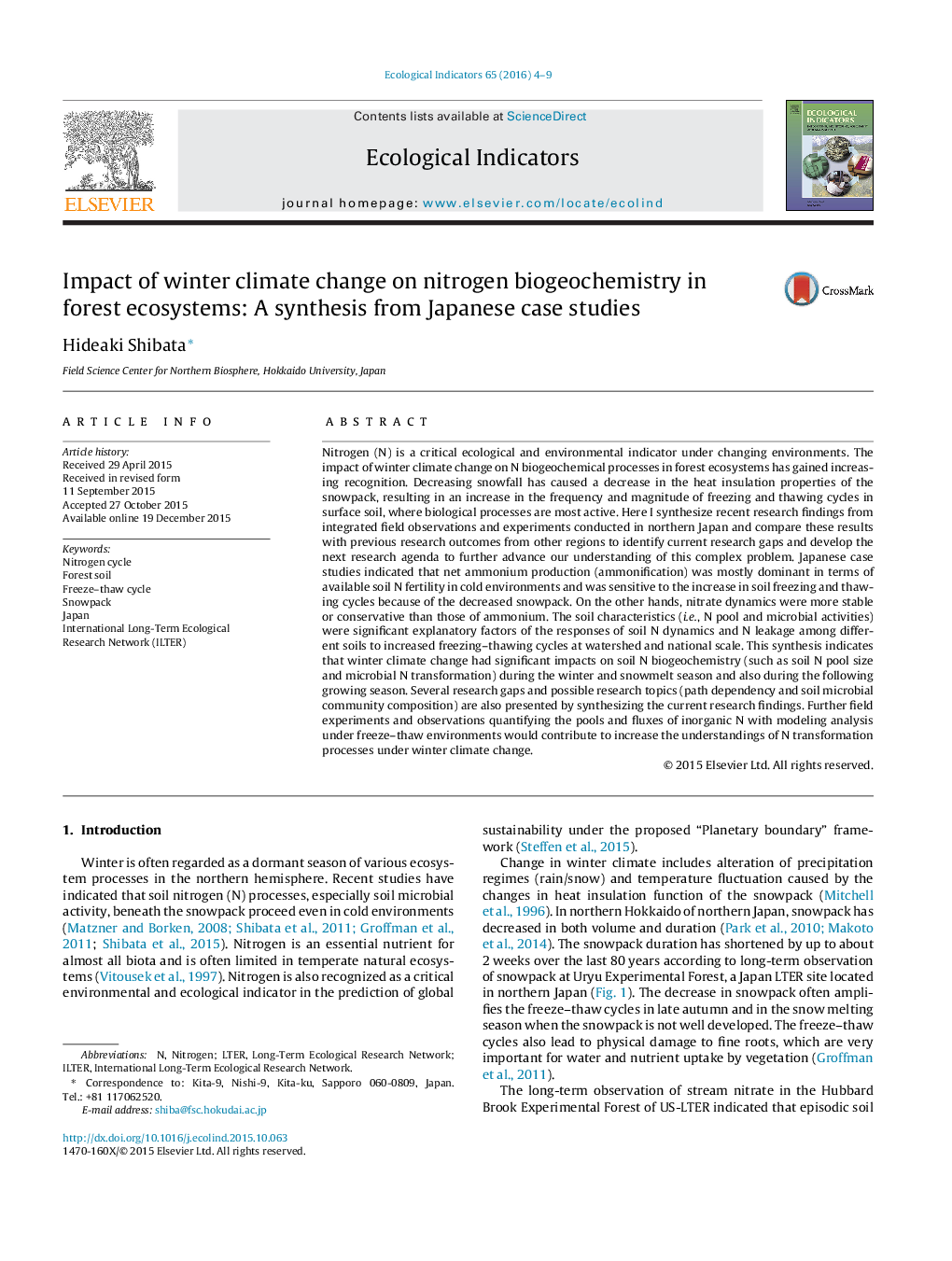| کد مقاله | کد نشریه | سال انتشار | مقاله انگلیسی | نسخه تمام متن |
|---|---|---|---|---|
| 6293330 | 1617137 | 2016 | 6 صفحه PDF | دانلود رایگان |
- Effect of winter climate change on soil nitrogen (N) biogeochemical processes was synthesized based on Japanese case studies.
- Ammonium-N was dominant for soil inorganic N fertility under cold environments.
- Net ammonification enhanced by increased soil freezing-thawing cycles.
- Further needs of comparative research with the analyses of microbial composition and functions, overwinter impacts, and the long-term legacy effects using global site network (i.e., ILTER) were addressed.
Nitrogen (N) is a critical ecological and environmental indicator under changing environments. The impact of winter climate change on N biogeochemical processes in forest ecosystems has gained increasing recognition. Decreasing snowfall has caused a decrease in the heat insulation properties of the snowpack, resulting in an increase in the frequency and magnitude of freezing and thawing cycles in surface soil, where biological processes are most active. Here I synthesize recent research findings from integrated field observations and experiments conducted in northern Japan and compare these results with previous research outcomes from other regions to identify current research gaps and develop the next research agenda to further advance our understanding of this complex problem. Japanese case studies indicated that net ammonium production (ammonification) was mostly dominant in terms of available soil N fertility in cold environments and was sensitive to the increase in soil freezing and thawing cycles because of the decreased snowpack. On the other hands, nitrate dynamics were more stable or conservative than those of ammonium. The soil characteristics (i.e., N pool and microbial activities) were significant explanatory factors of the responses of soil N dynamics and N leakage among different soils to increased freezing-thawing cycles at watershed and national scale. This synthesis indicates that winter climate change had significant impacts on soil N biogeochemistry (such as soil N pool size and microbial N transformation) during the winter and snowmelt season and also during the following growing season. Several research gaps and possible research topics (path dependency and soil microbial community composition) are also presented by synthesizing the current research findings. Further field experiments and observations quantifying the pools and fluxes of inorganic N with modeling analysis under freeze-thaw environments would contribute to increase the understandings of N transformation processes under winter climate change.
Journal: Ecological Indicators - Volume 65, June 2016, Pages 4-9
